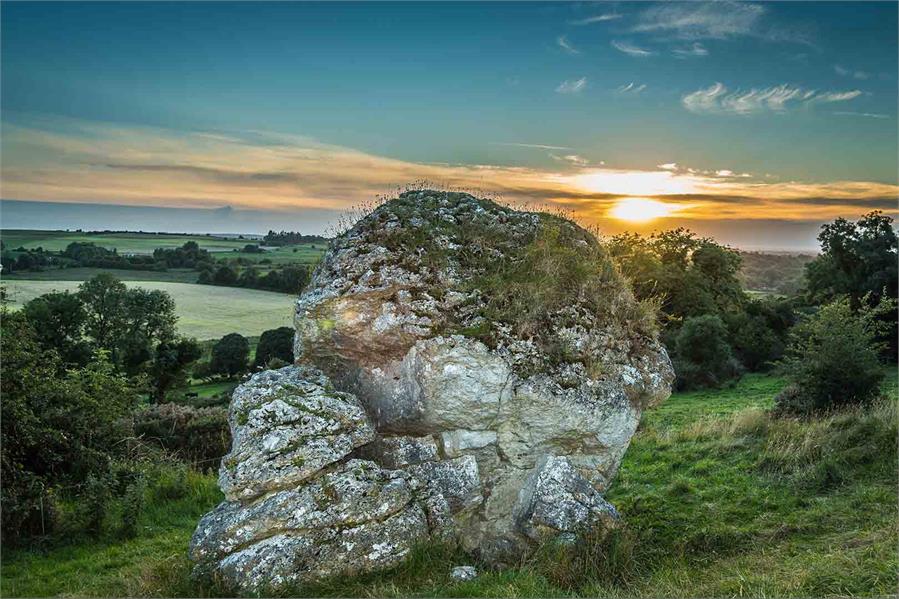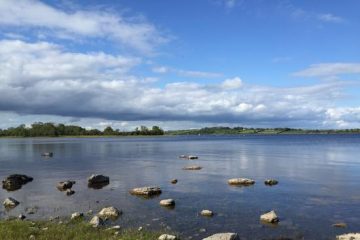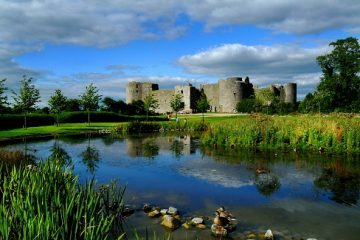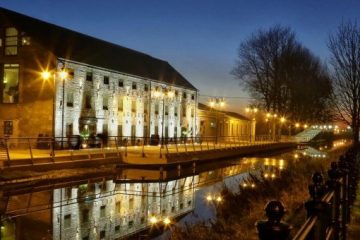M6 TO GALWAY / ATHLONE EXIT, TAKE N52 TO L1122, R389 & R390
It’s a curious thing to climb a hill on an apparentlyordinary working farm between the villages of Ballymore and Loughnavally, to be then suddenly struck by the realisation that you happen to be standing at a gateway to the magical “otherworld”. But on a tour with a local storyteller guide, the thin veil between the natural and supernatural slips right away. The giant fissured limestone boulder before you on the Hill of Uisneach is certainly a striking gateway. Called Aill na Míreann – the Stone of Divisions – it’s said to mark the centre of Ireland and the coming together of the provinces. The goddess Ériu, after whom Ireland is named, lies buried underneath. Now you’re fully attuned to all sorts of possibilities evoked by the mysterious monuments scattered around the# hill: barrows, cairns, ringforts, a holy well, remains of circular enclosures and ancient roads, one linking to the nearby Hill of Tara.
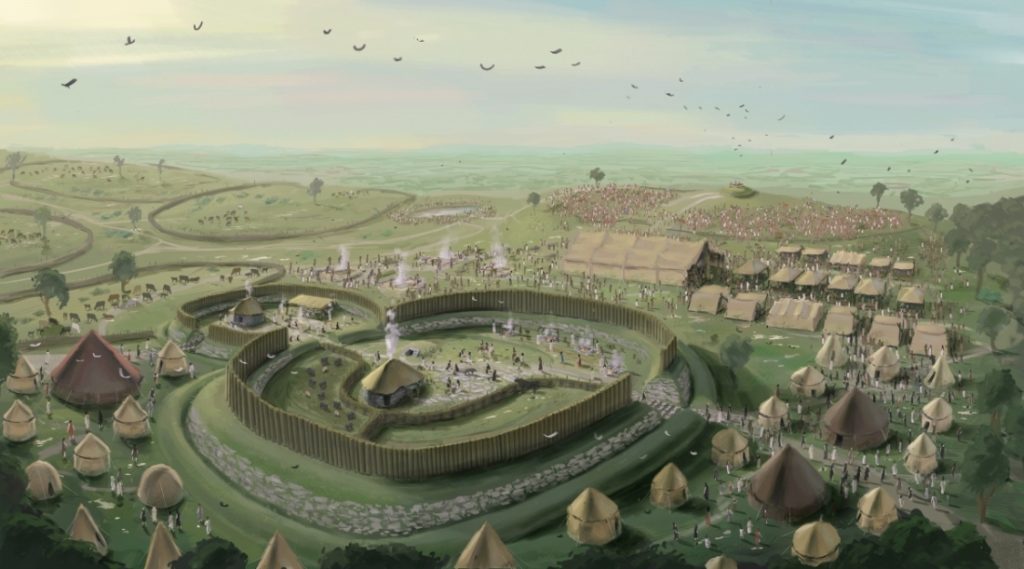
Uisneach has been a meeting place since prehistoric times, a seat of kings and a sacred site of worship, ancient and Christian. In modern days it has been a focal point for political rallies with Daniel O’Connell, Éamon de Valera and Padraig Pearse addressing the Irish public – Irish writer James Joyce was also a regular visitor. On you go, pausing by the hilltop lake where the Sun god Lugh met his mortal end; chatting about St Patrick’s visit – there are stunning views from his place of worship, St. Patrick’s Bed, over the sweeping central plain; imagining Ireland’s first great Bealtaine fire at Uisneach to celebrate the coming of summer.
The May tradition has been rekindled in Uisneach’s Fire Festival, a whirl of feasting, music, dance and a fire parade that sees golden flames crisping the dusk sky. It’s then that you might look up and ponder the legend that says Lugh, with his “long arm trailing behind him”, was actually a comet. Who’s to say where natural and supernatural begin or end?

